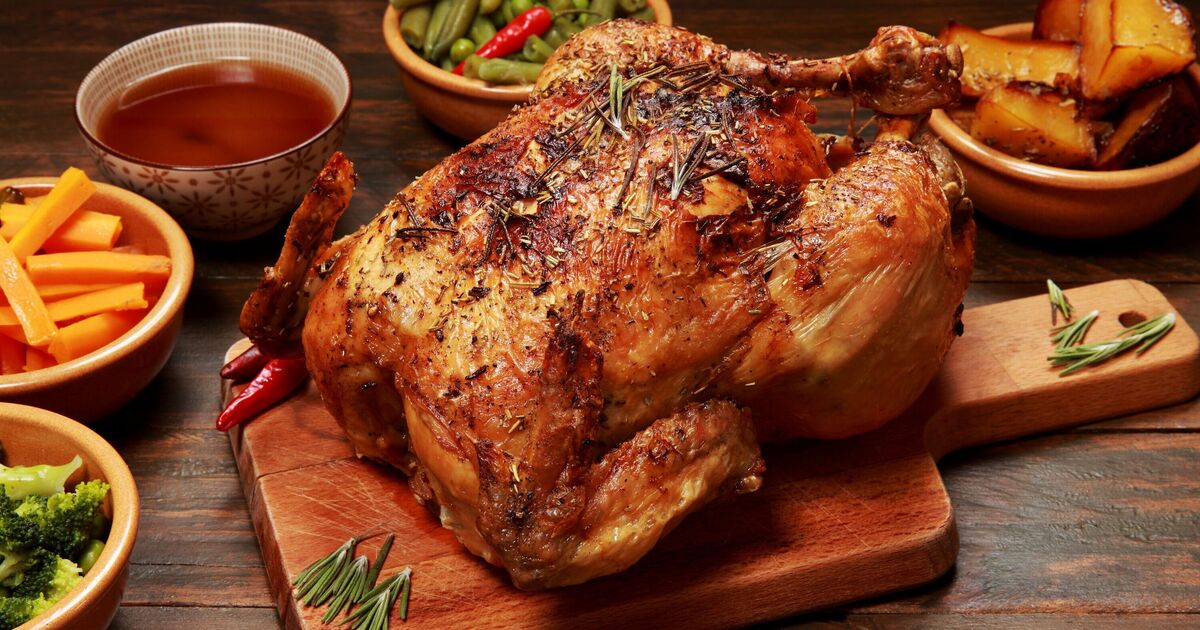A classic roast chicken always goes down well, and while many people might have their own secret tips and hacks to make their roast chicken special, there is one universal trick that every home cook should know about. There are three things that make a good roast chicken – seasoning, meat that isn’t dry, and of course crispy skin. To achieve the “crispiest” skin, there is one ingredient that is most likely already in your cupboard that has to be used.
According to Simply Recipes, baking powder is the way forward when it comes to crisping up the chicken skin of your roast. However, before understanding how to make perfect use of the staple, we need to begin with dry brining. This cooking technique works on various types of meat and involves salting the chicken between 12 and 48 hours before cooking.
“You simply mix kosher salt with black pepper and a few dried herbs and apply it with a heavy hand all over the surface of the chicken. This sits in the fridge, and that’s where all of the magic happens,” the website reads.
The salt does takes out the moisture from the surface of the chicken, and the moisture can then be reabsorbed by diffusion, resulting in “a very concentrated brine” that is made up of its own moisture. All done without affecting the texture of the meat.
The salt also draws excess moisture away from the skin, which allows the skin to crisp up faster, but using baking powder will take things up a notch, and all you need is a teaspoon.
Adding one teaspoon of baking powder to the dry brine will help dry out the skin even more. It also raises the skin’s pH level, making it brown more evenly.
If you have ever been deceived by a golden brown chicken that looked nice and crispy in the oven but whose skin was “rubbery” when you took it out, these two tricks will help prevent that from happening again.
The first way is to separate the skin from the meat by using your hands to create a pocket between the breast meat and the skin. You can also add a barrier, like lemon slices or herbs, to “give the fat somewhere to go.
The other way to do it is to poke holes in the skin using a fork or skewer. This will allow the fat and the steam created to go somewhere else, and you are left with crispy skin that remains crispy.

